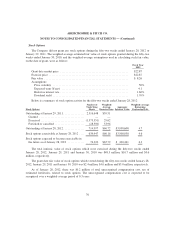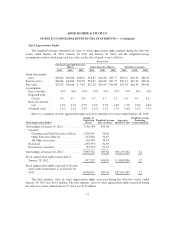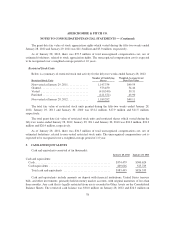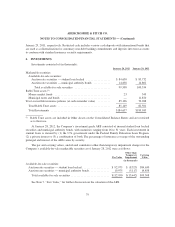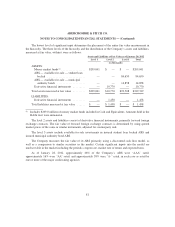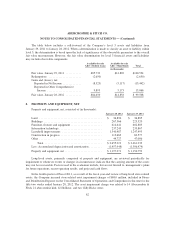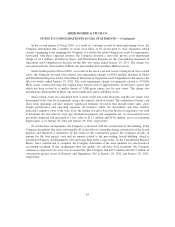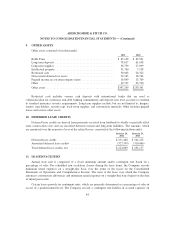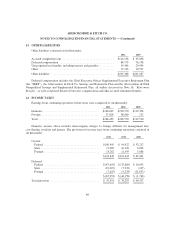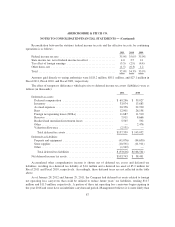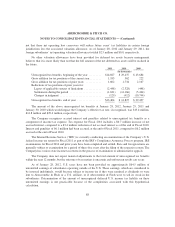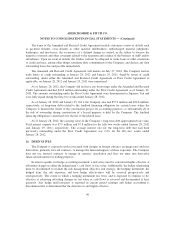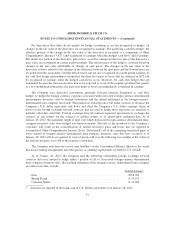Abercrombie & Fitch 2011 Annual Report Download - page 86
Download and view the complete annual report
Please find page 86 of the 2011 Abercrombie & Fitch annual report below. You can navigate through the pages in the report by either clicking on the pages listed below, or by using the keyword search tool below to find specific information within the annual report.ABERCROMBIE & FITCH CO.
NOTES TO CONSOLIDATED FINANCIAL STATEMENTS — (Continued)
In the second quarter of Fiscal 2010, as a result of a strategic review of under-performing stores, the
Company determined that a number of stores were likely to be closed prior to lease expiration, which
caused a triggering event requiring the Company to evaluate the related long-lived assets for impairment.
Associated with these expected closures, the Company incurred a non-cash, pre-tax asset impairment
charge of $2.2 million, included in Stores and Distribution Expense on the Consolidated Statement of
Operations and Comprehensive Income for the fifty-two weeks ended January 29, 2011. The charge was
associated with one Abercrombie & Fitch, one abercrombie kids and three Hollister stores.
In the fourth quarter of Fiscal 2010, as a result of the fiscal year-end review of long-lived store-related
assets, the Company incurred store-related asset impairment charges of $48.4 million, included in Stores
and Distribution Expense on the Consolidated Statement of Operations and Comprehensive Income for the
fifty-two weeks ended January 29, 2011. The asset impairment charge was primarily related to 13 Gilly
Hicks stores constructed using the original large format store of approximately 10,000 gross square feet
which has been revised to a smaller format of 5,000 gross square feet for new stores. The charge also
included one Abercrombie & Fitch, one abercrombie kids and six Hollister stores.
Store-related assets are considered level 3 assets in the fair value hierarchy and the fair values were
determined at the store level, primarily using a discounted cash flow model. The estimation of future cash
flows from operating activities requires significant estimates of factors that include future sales, gross
margin performance and operating expenses. In instances where the discounted cash flow analysis
indicated a negative value at the store level, the market exit price based on historical experience was used
to determine the fair value by asset type. Included in property and equipment, net, are store-related assets
previously impaired and measured at a fair value of $13.1 million and $14.6 million, net of accumulated
depreciation, as of January 28, 2012 and January 29, 2011, respectively.
In certain lease arrangements, the Company is involved with the construction of the building. If the
Company determines that it has substantially all of the risks of ownership during construction of the leased
property and therefore is deemed to be the owner of the construction project, the Company records an
amount for the total project costs and an amount related to the pre-existing, leased building, which is
included in Property and Equipment, Net and Long-Term Debt, respectively, on the Consolidated Balance
Sheets. Once construction is complete, the Company determines if the asset qualifies for sale-leaseback
accounting treatment. If the arrangement does not qualify for sale-lease back treatment, the Company
continues to depreciate the asset over its useful life. The Company had $47.5 million and $16.5 million of
construction project assets in Property and Equipment, Net at January 28, 2012 and January 29, 2011,
respectively.
83





